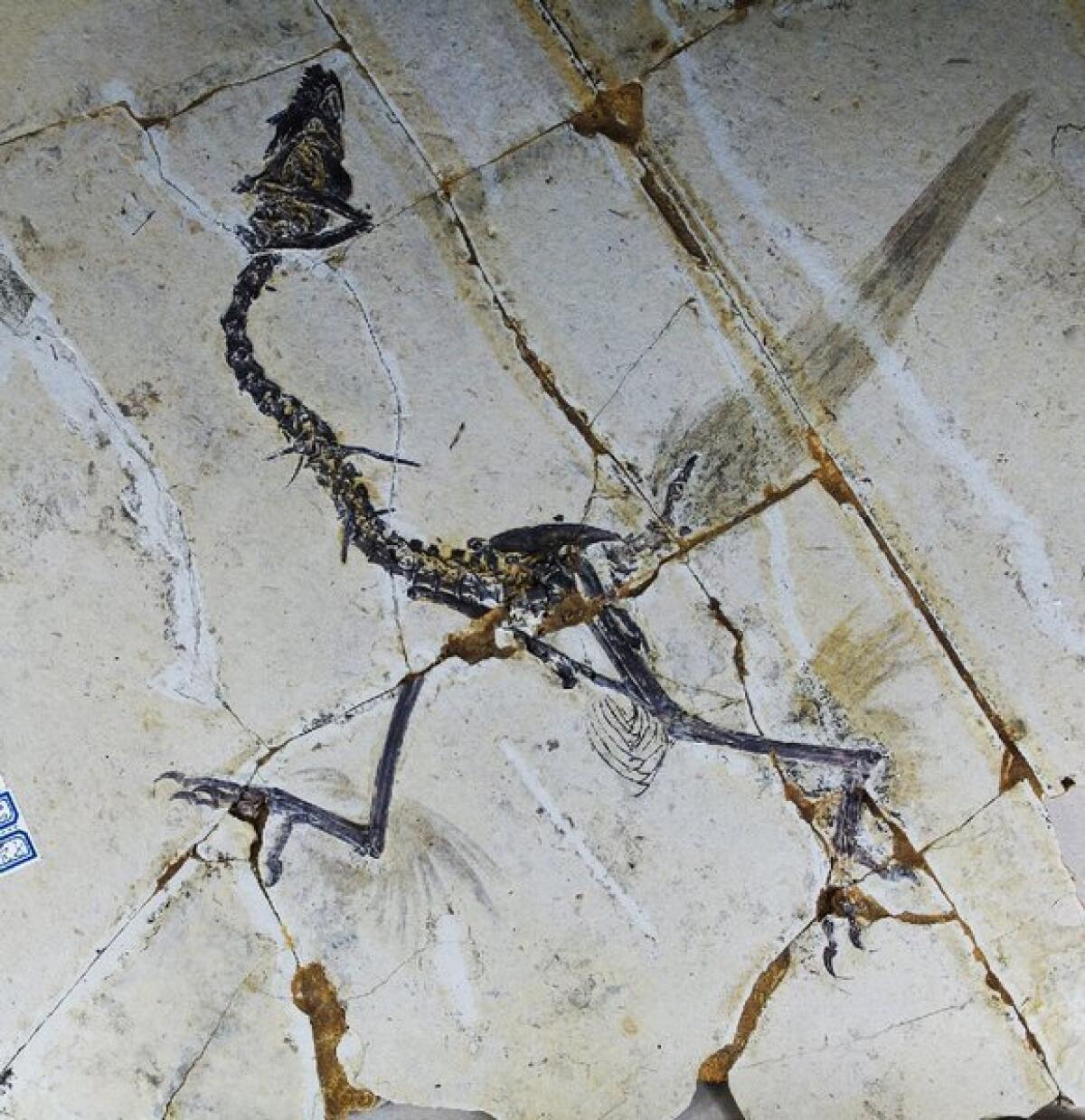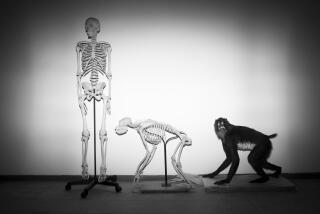Ancient feathered birds may have sported four wings, study says

- Share via
Some of the earliest birds hailing from the age of the dinosaurs may have sported four flying limbs, a team of Chinese researchers says.
If so, 11 fossils from the lower Cretaceous period, about 120 million years ago, could represent a missing link in the development of modern birds, according to a new paper released Thursday by the journal Science.
Modern birds generally work with two wings, using small, clawed hind legs for ground travel. A few, like the golden eagle, have fuzzy down on their back limbs, which is for insulating their appendages, not flying. Though researchers have unearthed evidence of downy limbs in feathered dinosaurs, little evidence existed that early birds were using those hind legs for flapping.
But 11 specimens from Liaoning in northeastern China, from several species show evidence of long, stiff feathers with curved shafts jutting out nearly perpendicular to the leg -- a far cry from mere insulation.
The feathers were arranged in a relatively wide, flat plane, making it a potentially flight-worthy design, says a team of Chinese scientists studying feathered fossils.
“These features suggest that the metatarsal feathers were aerodynamic in function, providing lift, creating drag, and/or enhancing maneuverability, and thus played a role in flight,” the authors wrote.
It’s possible the four-wing model was used early in birds’ development before evolving into the more aerodynamic two-wing formula.
There were some drawbacks to the study, leaving it unclear whether these feathers were really used to fly. The imprinted fossils were only two-dimensional, so the scientists could not fully see how the feathers related to the legs in real life.
What’s more, there were relatively few fossils to compare: Out of a grouping of 1,338 fossils at Shandong Tianyu Museum of Nature in China, only 11% bore any signs of hind-leg feathers.
“The nature of their biomechanical contribution to flight ability in taxa that possessed them is debated,” the researchers acknowledged. Still, they added, even with the “paucity of data available … the analysis does suggest an interesting evolutionary pattern.”
Follow me on Twitter @aminawrite.






